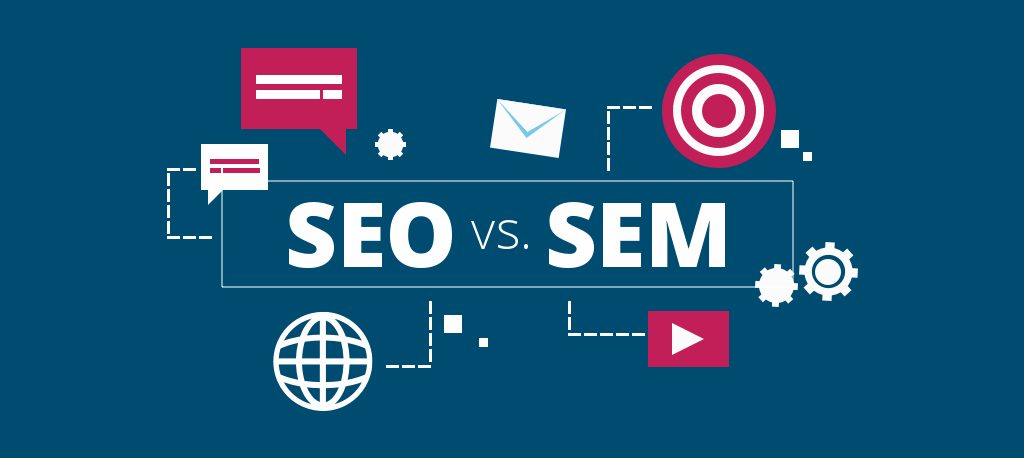In today’s digital landscape, businesses must master the art of attracting, engaging, and converting leads online. Search Engine Marketing (SEM) and Search Engine Optimization (SEO) are essential strategies for enhancing your online presence and driving qualified traffic to your website. By integrating and optimizing these strategies, you can significantly increase your lead generation efforts. This blog will guide you through three proven steps to get more leads using SEM and SEO: conducting thorough keyword research, optimizing your website for SEO, and implementing effective SEM campaigns. By following these steps, you’ll be well on your way to maximizing your online visibility and achieving your business goals.
1. Understanding the Basics of SEM & SEO
Before diving into the steps, it’s important to grasp the fundamentals of SEM and SEO and how they complement each other.
Search Engine Optimization (SEO) involves enhancing your website to improve its organic visibility on search engines. This includes on-page optimization (keywords, meta tags, content quality) and off-page factors (backlinks, social signals). The goal is to rank higher in organic search results, driving more traffic to your site.
Search Engine Marketing (SEM) encompasses paid search advertising, such as Pay-Per-Click (PPC) campaigns. By bidding on keywords relevant to your business, your ads appear in search engine results pages (SERPs) when users search for those terms. SEM offers immediate visibility through paid placements, unlike the longer-term strategy of SEO.

2. Step 1: Conduct Thorough Keyword Research
Keyword research is the foundation of both SEO and SEM, ensuring your content and ads reach the right audience.
Identifying Your Target Audience
Understand your target audience’s demographics, psychographics, and behavior. Knowing who you’re targeting helps in selecting the most relevant keywords.
Using Keyword Research Tools
Utilize tools like Google Keyword Planner, SEMrush, Ahrefs, and Ubersuggest to find the best keywords. These tools provide data on search volume, competition, and trends.
Analyzing Competitor Keywords
Analyze the keywords your competitors are targeting to gain insights and benchmark your strategy. Tools like Ahrefs and SEMrush can reveal these keywords.
Selecting the Right Keywords
Choose a mix of short-tail (broad, high-volume) and long-tail (specific, lower-volume) keywords. Long-tail keywords often have less competition and can be more cost-effective.
3. Step 2: Optimize Your Website for SEO
With your keywords in hand, focus on optimizing your website to improve its organic search rankings.
On-Page SEO
Optimize individual pages with unique, keyword-rich title tags, compelling meta descriptions, headers, high-quality content, and clean, descriptive URLs.
Technical SEO
Enhance your website’s technical performance, including site speed, mobile optimization, creating a sitemap, and managing the robots.txt file.
Off-Page SEO
Build your website’s authority through high-quality backlinks, social media engagement, and local SEO efforts, such as optimizing your Google My Business listing.
Content Strategy
Develop a content strategy that includes blog posts, guides, e-books, and multimedia content. Ensure your content is valuable and incorporates your target keywords naturally.
4. Step 3: Implement Effective SEM Campaigns
Implement SEM campaigns to boost your visibility through paid search advertising.
Setting Up Google Ads
Create and manage campaigns in Google Ads, defining clear goals, setting a budget, and using targeting options to reach your ideal audience.
Crafting Compelling Ad Copy
Write attention-grabbing ad copy with compelling headlines, clear descriptions, and effective ad extensions.
Keyword Bidding Strategies
Choose the right bidding strategy, such as manual CPC, enhanced CPC, target CPA, or target ROAS, based on your campaign goals.
A/B Testing and Optimization
Continuously test different ad elements and monitor performance metrics to optimize your campaigns. Make adjustments based on data to improve results.
Integrating SEM and SEO for Maximum Lead Generation
Integrate SEM and SEO strategies for consistent messaging and comprehensive reporting. Use data from SEM to inform SEO efforts and vice versa. Consistent messaging and data sharing enhance both strategies’ effectiveness.
Monitoring and Adjusting Your Strategies
Regularly audit and adjust your strategies based on performance metrics like organic traffic, keyword rankings, CTR, conversion rate, and CPC. Continuous optimization is key to maintaining effective lead generation efforts.
Common Pitfalls and How to Avoid Them
Avoid common mistakes such as keyword stuffing, ignoring mobile optimization, neglecting negative keywords, overlooking local SEO, and failing to test and optimize. Stay vigilant and adaptive to maintain successful SEM and SEO campaigns.
Conclusion :
By conducting thorough keyword research, optimizing your website for SEO, and implementing effective SEM campaigns, you can significantly boost your lead generation. Integrating these strategies, continuously monitoring performance, and avoiding common pitfalls will help you stay competitive in the digital landscape. Regular refinement of your strategies ensures ongoing success, driving more qualified leads and business growth.










